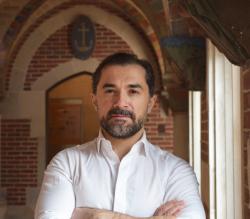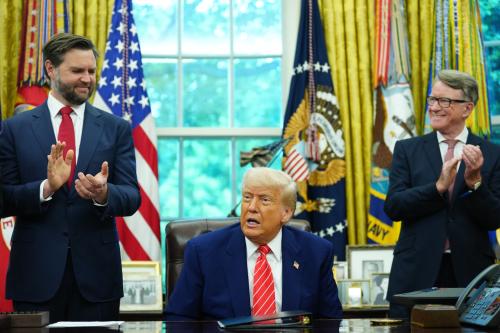As a child growing up in Turkey, I worked as a market boy, selling potatoes and onions in the marketplace. Each week, I would put on my apron and watch thousands of transactions unfold before my eyes—it was fascinating. When I grew older, I came to understand that all over the country, such transactions came together to magically shape its gross national product and income.
On the television at home, adults in suits and ties told us that some countries excelled in these economic exchanges, and this explained their relative affluence. This proved to be the most perplexing for me: How could countries with similar people exhibit such profound differences in wealth? Weren’t they cultivating and consuming potatoes and onions similar to those that I sold? Didn’t they possess comparable lands and workers to cultivate such crops? As a 10-year-old, the perplexity of cross-country differences left me convinced that there must be some magic that transformed similar people and fields into vastly different levels of wealth.
It must have been these experiences that led me to study economics. However, it wasn’t until my first macroeconomics course as an undergrad in Turkey that I truly understood what lay behind the magic. In that course, the professor unveiled a magic productivity term, “A”, and an ingenious formula that laid bare the secrets behind national disparities
k(t+1)−k(t)=sAf(k)−(d+n+g)k
I had finally met the magician, Robert Merton Solow, whose recent passing has left us with a profound sense of loss.
The Solow model posited the existence of two modes of growth. The first, arguably the easier to understand, revolved around capital accumulation. The model specified that countries could increase their production of potatoes and onions if laborers had more tools at their disposal. If 10 workers in a potato field had two plows instead of one, their potato output would—unsurprisingly—increase. So, a major driver of economic growth in the Solow model was the availability of more capital. But there was a catch. When the same number of workers got twice the amount of the same capital, their output would increase by less than double. This was due to diminishing returns—any additional input yields progressively smaller additional output.
This would lead to an important consequence. While countries could achieve short-term growth in per capita income through capital accumulation, this trajectory could not be sustained indefinitely. Over time, the accumulation of the same type of capital would result in diminishing returns, ultimately approaching zero growth.
This led to the next question: Why do countries exhibit such divergent long-term growth rates? Put another way, after centuries of existence, why are some nations so much wealthier than others? This is where Solow’s magical productivity term, “A,” comes in. With his equations, Solow demonstrated that sustained long-term growth can only be achieved by growing “A”—moving from simple wooden-stick plows to steel plows then to tractor-drawn plows, and so on to AI-informed plows. In other words, economies had to become more productive through the adoption of new technologies.
In 1987, this insight earned Solow a Nobel Prize. It also ignited a torch relay in economics literature that drew the attention of brilliant minds, including subsequent Nobel laureates Bob Lucas and Paul Romer, to contemplate the drivers of productivity growth.
Physical capital is visible and understood by anyone. In contrast, productivity is intricate, dynamic, and not immediately apparent and hence—even when quantified—only becomes the “measure of our ignorance.” Policymakers find it simpler to devise plans for increasing investment in physical capital, but the unobservable and complex drivers of productivity such as knowledge transfer and innovation have deterred them from devoting enough resources to policies dedicated to boosting productivity. They would do much better if they heeded Solow’s message: Sustained economic growth is impossible without increases in productivity.
This is why the upcoming World Development Report by the World Bank bears Solow’s mark, concentrating on identifying policies that enable countries to accumulate capital “k” more efficiently and foster productivity “A” through the adoption of technology and innovation.
It is difficult to identify another theory that is simpler and has had such a profound impact on our understanding of economic growth. Its elegance and simplicity make its insights accessible even to distracted college freshmen. While economics students might forget most of the models they are taught, the Solow Model stays etched in their minds for life.
When I got into MIT’s economics Ph.D. program, I vividly recall the first time I spotted Professor Solow. He was in the cafeteria downstairs in the Sloan Building having lunch with Paul Samuelson. It remains one of the most special days of my life. Though he had stopped teaching, I made sure to attend all the talks he gave in Cambridge that I came across over the years. He remained impressive until the end.
There are thousands who have been inspired by Solow’s ideas and insights, perhaps even some market boys and girls in the distant corners of the world. This market boy is now working on advancing economic growth theory and improving policy. I am grateful to Bob Solow and Bob Lucas—who we lost earlier this year—and the other economic giants for letting us stand on their tall shoulders. I knew them both, and I know that they would want us to look further than even they did.
Farewell, Professor Solow, and thank you for the magic.
The Brookings Institution is committed to quality, independence, and impact.
We are supported by a diverse array of funders. In line with our values and policies, each Brookings publication represents the sole views of its author(s).




Commentary
Thank you for the magic, Bob Solow
December 26, 2023